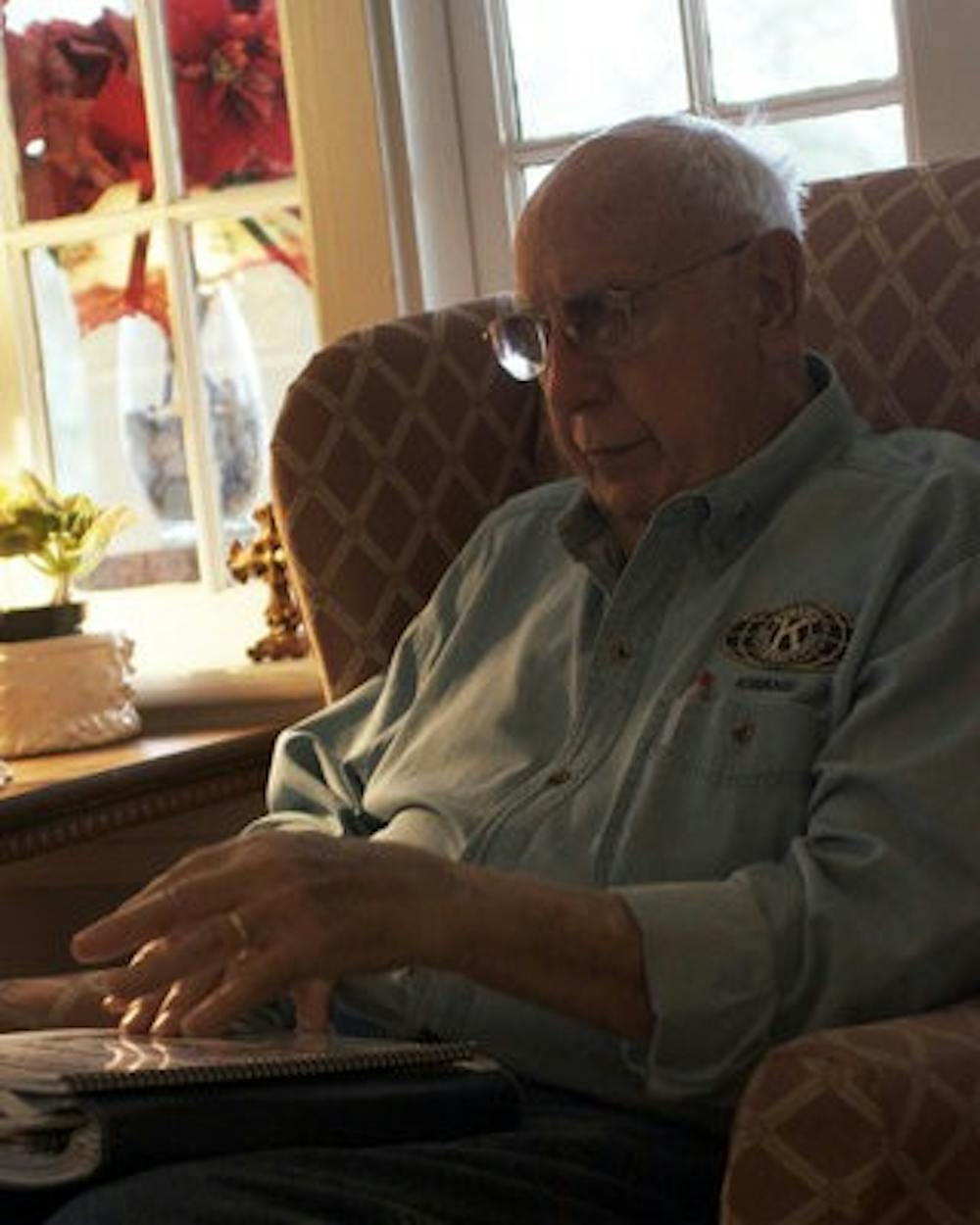Tucked away in sleepy downtown Opelika, pictures and artifacts from the 1940s at the Museum of East Alabama tell the story of more than 3,000 captured prisoners. Elaborately carved cups and plates left behind show the amount of detail people can achieve when they have time on their hands. Worn leather-bound Bibles, handwritten letters and military roll-call sheets serve as the last link to the prisoners' thoughts.
What sets this exhibit apart from other World War II-era displays is the focus on German prisoners. Specifically, the objects are from German prisoners detained in Opelika from 1942-1945.
"There's a lot of history around here that people don't realize," said Glenn Buxton, museum director.
As the need for prisoner-of-war camps increased, America opened its doors to Axis prisoners. Germans were shipped to ports in New York, Boston and Baltimore, and then brought by train to camps across the United States. Camp Opelika was the second largest camp in Alabama, according to the Encyclopedia of Alabama.
"In six months, they were able to build the whole thing," said local resident Al Killian, retired Lt. Colonel in the Alabama National Guard and author of the book "Camp Opelika." "They were like McDonalds' buildings, one size fit all."
Prisoners served as cooks, formed soccer teams and staged plays with men starring in all of the roles. An orchestra of prisoners, some of who had been professional musicians before the war, put on shows members of the Opelika community could attend. Camp newspapers detailed these activities and more.
"It was a lot better over here than over there," Buxton said.
Courses ranging from Spanish to woodworking were taught by the prisoners. Records show approximately 1,400 prisoners participated in coursework, according to the Encyclopedia of Alabama.
The camp's prisoners were also allowed to work in the cotton fields and lumber plants around the community.
"If they worked, they made 80 cents a day," Killian said. "That's about what the American soldier was making, too, at $21 a month."
Former prisoners remember Opelika fondly. Relatives send letters and pictures, and some made a return trip to the city. The relationships they made with the community resonated after they left.
German soldiers were confused when arriving at the major ports of America, since their superiors told them German bombers had destroyed the major cities on the East Coast, according to Killian.
They had also been informed they would be killed when taken prisoner, and prepared themselves to be shot when taken off the trains.
Bringing enemy soldiers to the home front humanized the Americans in German eyes, and the Germans in American eyes.
"We learned that they weren't so different from us," Killian said. "They had wives and kids at home."
Camp Opelika had a profound impact on the community and marked an important time in local history, yet few artifacts remain to tell its story.
"We were dummies," said Killian as he talked about the amount of history destroyed or neglected.
"It is important for people to know their history," Killian said. "People need to know what was done for them."
German internment camps are preserved for people to learn from the horrors of the Holocaust. The atrocities of how the Japanese military treated American prisoners are taught in schools.
As Winston Churchill said, "history is written by the victors."
The Museum of East Alabama is teaching how similar our enemies were, and provides insight to the similarities in human nature that we all have through the artifacts from Camp Opelika.
Do you like this story? The Plainsman doesn't accept money from tuition or student fees, and we don't charge a subscription fee. But you can donate to support The Plainsman.





